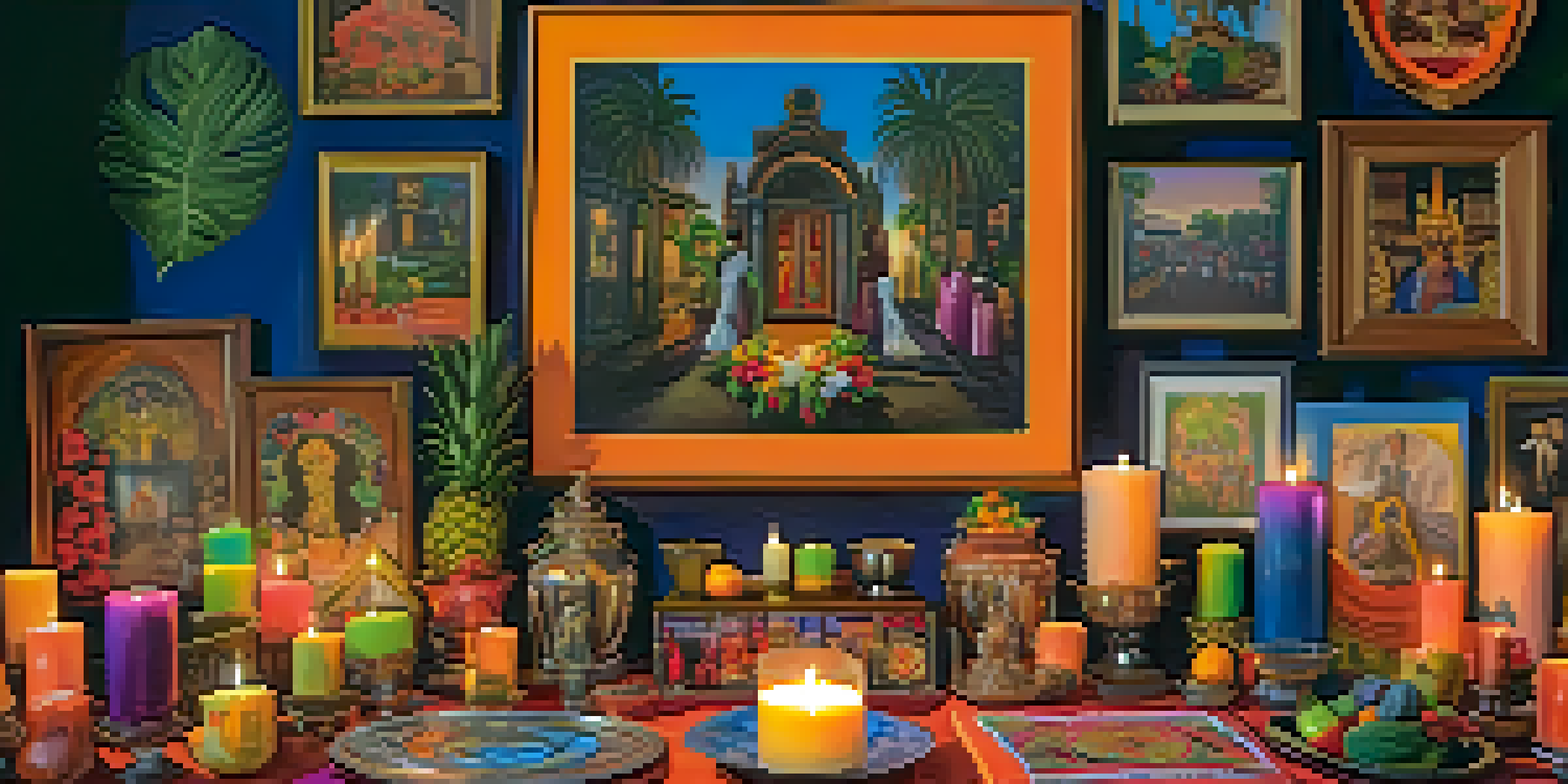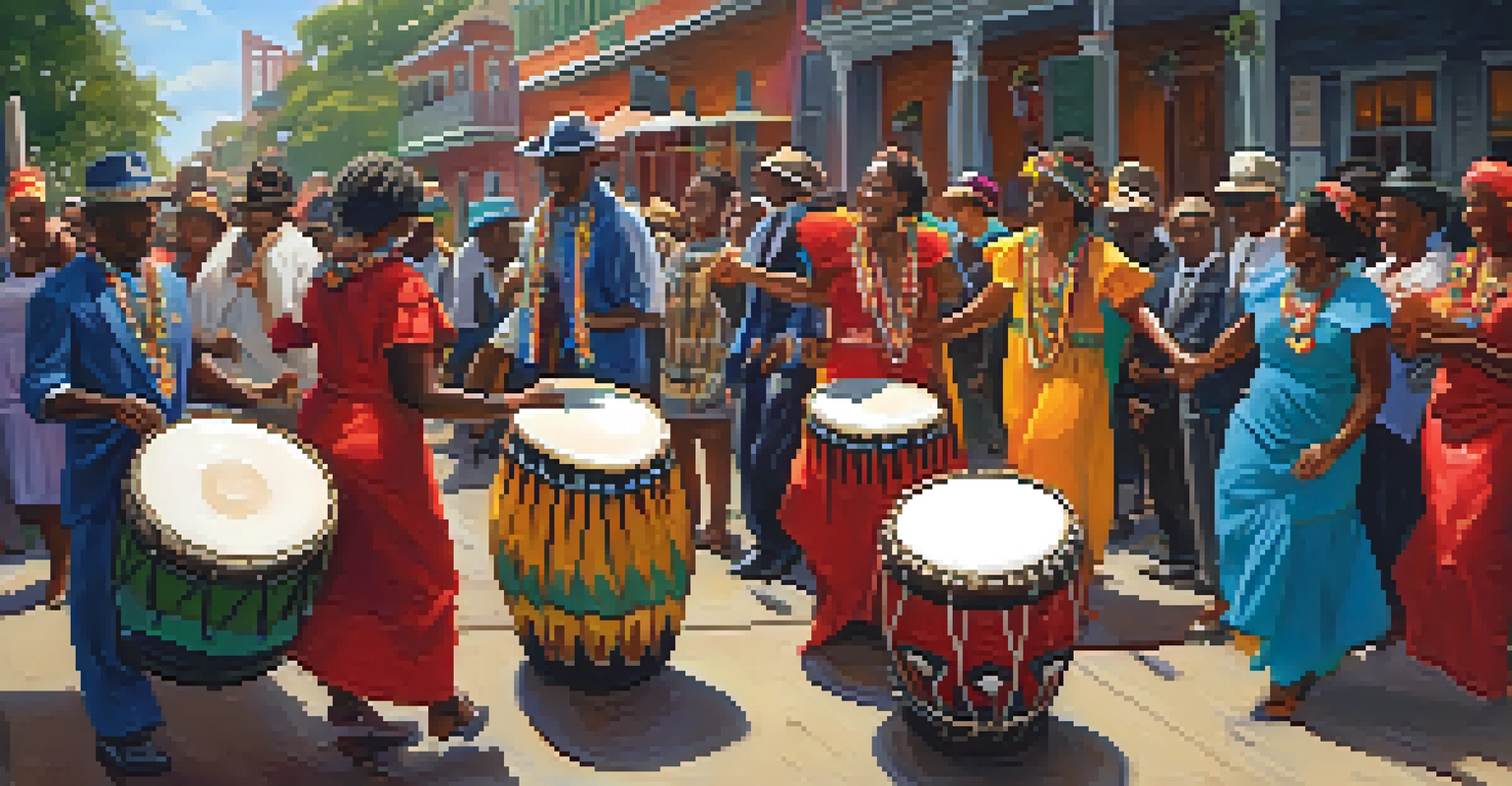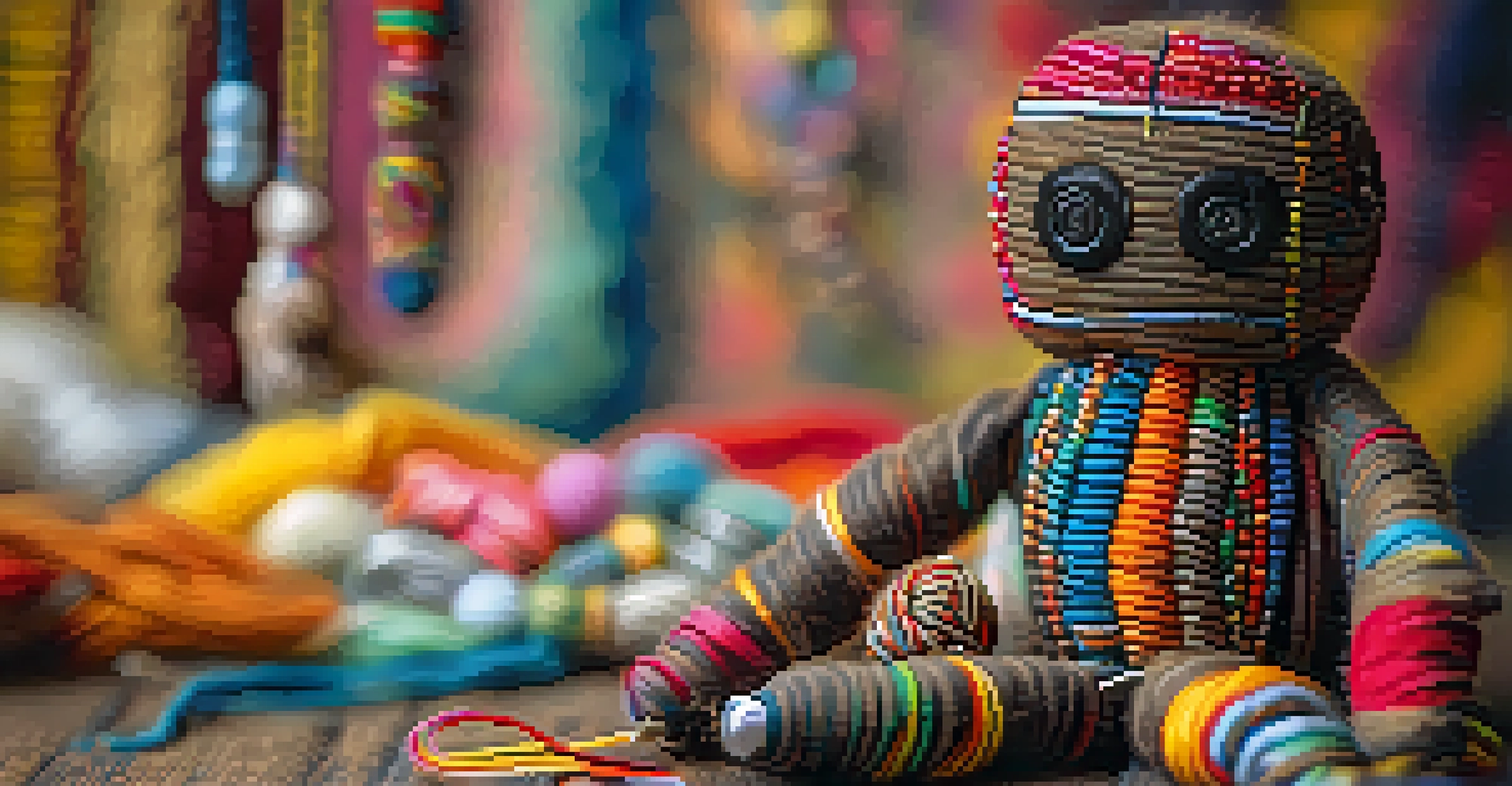New Orleans Voodoo: A Cultural Blend of Faith and Tradition

What is New Orleans Voodoo? An Overview of Its Origins
New Orleans Voodoo, often misunderstood, is a vibrant spiritual practice rooted in African traditions and West African religions. It emerged in the 18th century as enslaved Africans blended their ancestral beliefs with Catholicism and local customs. This fusion created a unique faith that reflects the complexities of cultural survival and adaptation.
Voodoo is a way of life; it offers practitioners tools to navigate the complexities of existence.
Unlike the often sensationalized portrayals in popular media, New Orleans Voodoo is not about curses or dark magic. Instead, it focuses on community, healing, and connection to the ancestors. Practitioners see it as a way to honor lineage and navigate life's challenges with the support of spiritual forces.
At its core, New Orleans Voodoo encompasses a rich tapestry of rituals, practices, and beliefs that foster a sense of belonging. It serves as a reminder of the resilience and creativity of those who have preserved their heritage in the face of adversity.
The Role of Ancestors in New Orleans Voodoo Practices
Ancestors play a central role in New Orleans Voodoo, acting as spiritual guides and protectors. Practitioners often create altars adorned with photographs, offerings, and symbols to honor their deceased loved ones. This act of remembrance fosters a deep connection between the living and the dead.

Many Voodoo rituals involve calling upon ancestors for guidance, support, and healing. For instance, during ceremonies, practitioners may light candles and offer food or other gifts as a way to invite their ancestors to join the celebration. This practice reinforces the idea that the wisdom of those who came before can assist in navigating present-day challenges.
Voodoo: A Rich Spiritual Tradition
New Orleans Voodoo is a vibrant faith rooted in African traditions that emphasizes community, healing, and ancestral connection.
By honoring ancestors, practitioners of New Orleans Voodoo cultivate a sense of community and continuity. It emphasizes the importance of familial bonds and shared history, reminding everyone that they are part of a larger story that transcends generations.
Rituals and Ceremonies: A Glimpse into Voodoo Practice
Rituals and ceremonies are vital components of New Orleans Voodoo, offering a space for community gathering and spiritual connection. These events often feature music, dance, and the invocation of spirits, creating an atmosphere of celebration and reverence. Participants engage in singing, drumming, and dancing to awaken the spirits and invite their presence.
In every tradition, there is a story of resilience and creativity that shapes our identity.
One of the most well-known rituals is the 'Voodoo Queen' ceremony, where a leader channels spiritual energies to provide guidance and insight. The communal aspect of these events fosters a strong sense of belonging and reinforces shared beliefs, making them essential for community cohesion.
Through these vibrant ceremonies, practitioners not only honor their ancestors but also celebrate life and the interconnectedness of all beings. Each ritual serves as a reminder that spirituality can be joyous, communal, and deeply rooted in tradition.
Symbols and Tools: Understanding Voodoo's Unique Iconography
Symbols and tools are integral to New Orleans Voodoo, each carrying rich meanings and cultural significance. Items such as dolls, oils, and amulets are often used in rituals to represent specific intentions or to invoke particular spirits. For example, the Voodoo doll is frequently misunderstood; it is not used for harm but serves as a means of channeling energy and focus.
Colors, shapes, and materials are chosen purposefully, reflecting the practitioner's beliefs and the spirit's attributes. Each symbol tells a story, connecting the physical and spiritual realms and allowing practitioners to navigate their lives with intention and purpose.
Ancestors as Spiritual Guides
Practitioners honor their ancestors through rituals and altars, fostering a deep bond between the living and the deceased.
Understanding these symbols provides insight into the profound nature of New Orleans Voodoo. It reveals a world where every object holds power and meaning, bridging the gap between the visible and invisible, the everyday and the extraordinary.
Voodoo in Modern Culture: Misconceptions and Realities
In contemporary society, New Orleans Voodoo often finds itself at the intersection of fascination and misunderstanding. Popular media frequently sensationalizes Voodoo, depicting it as a dark and mysterious practice rather than the rich cultural tradition it truly is. This has led to a series of misconceptions that can overshadow the community's genuine beliefs and practices.
Despite these challenges, many practitioners strive to educate others about the true nature of Voodoo. They emphasize its roots in community, healing, and spirituality rather than the negative stereotypes often portrayed. Public workshops, cultural festivals, and open ceremonies serve as platforms for sharing knowledge and fostering understanding.
As society evolves, so does the perception of New Orleans Voodoo. By shedding light on its authentic practices, the community aims to reclaim its narrative and celebrate the beauty of their traditions in a modern context.
The Influence of Voodoo on New Orleans Culture and Identity
New Orleans Voodoo significantly shapes the city's cultural identity, influencing music, art, and cuisine. From the haunting melodies of jazz that echo through the streets to the vibrant art depicting Voodoo themes, the practice is woven into the very fabric of the city's creative expression. This cultural exchange enriches the community and fosters a sense of pride among its residents.
Food also plays a crucial role in this cultural blend, with traditional dishes often served during Voodoo rituals and celebrations. The act of sharing a meal becomes a communal event, reinforcing bonds and creating a sense of togetherness that transcends individual differences.
Cultural Influence of Voodoo
New Orleans Voodoo profoundly shapes the city's identity, influencing its music, art, and cuisine, while promoting a sense of community.
Ultimately, New Orleans Voodoo enhances the city's unique character, symbolizing resilience, creativity, and the blending of diverse cultures. It serves as a living testament to the city's history and the enduring spirit of its people.
Exploring the Spirituality of Voodoo: Faith and Healing
At its heart, New Orleans Voodoo is a deeply spiritual practice that encompasses faith, healing, and personal empowerment. Practitioners often seek guidance from spirits and ancestors to navigate life's challenges, whether it be health concerns, relationship issues, or personal growth. This reliance on spiritual support fosters a strong sense of community and interconnectedness.
Healing rituals are common in Voodoo, as practitioners use natural herbs and spiritual elements to promote wellness. This holistic approach reflects a deep understanding of the mind-body connection, emphasizing that spiritual and physical health are intertwined. It invites individuals to take an active role in their healing journey.

In this way, the spirituality of New Orleans Voodoo transcends mere belief; it becomes a way of life. It offers practitioners tools to navigate the complexities of existence, reminding them that they are part of a larger spiritual tapestry.